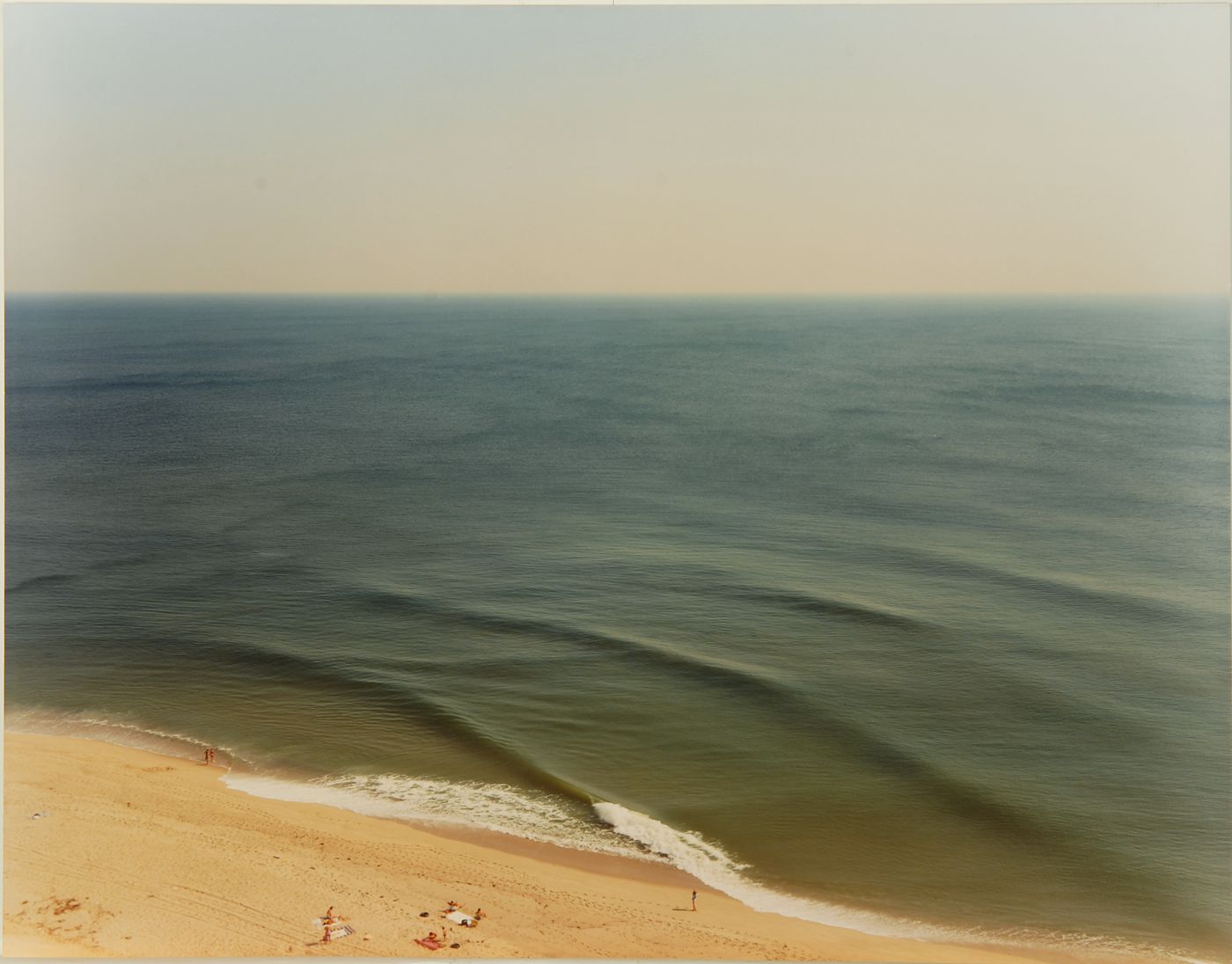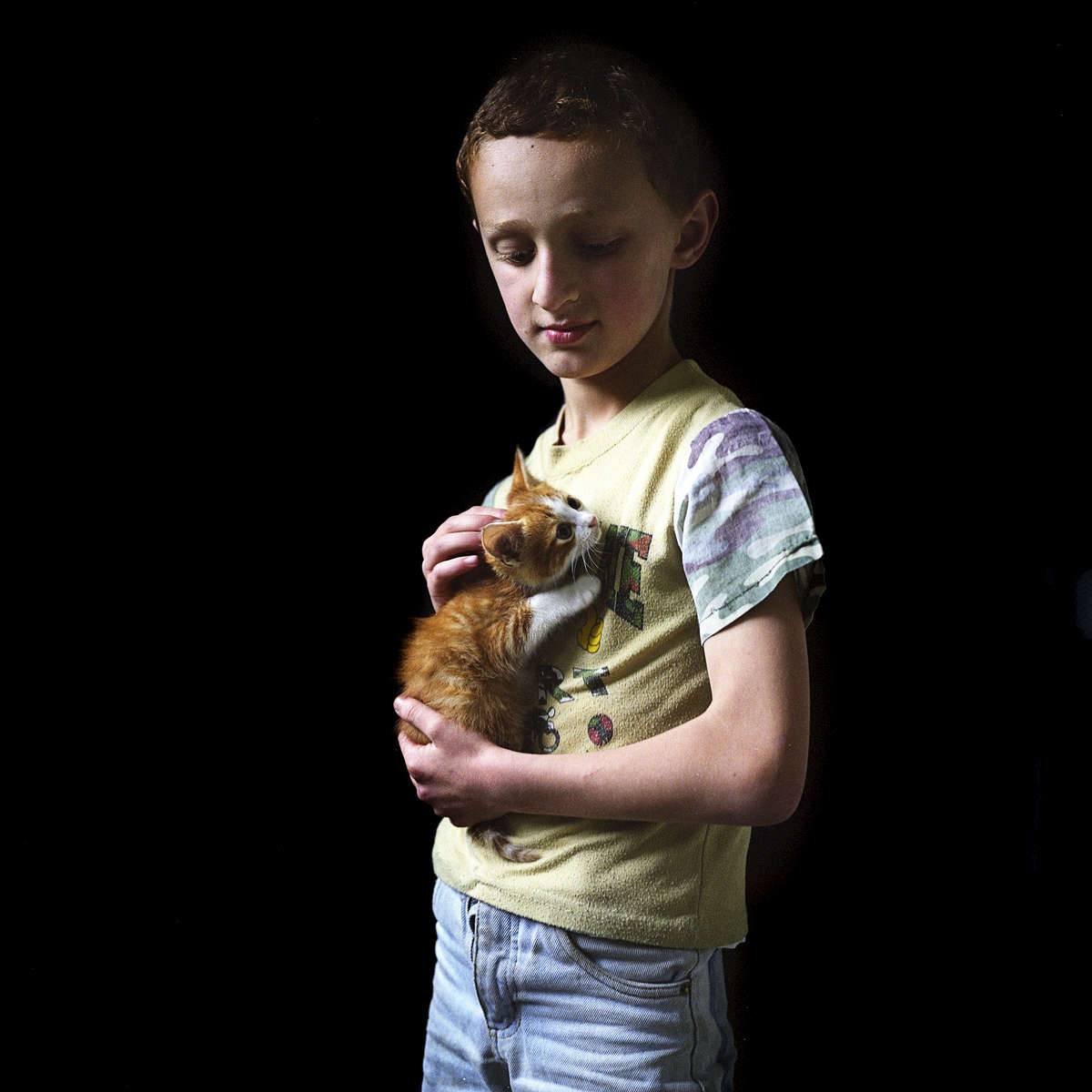“I try to be a photographer. I cannot talk. I am not interested in talking. If I have anything to say, it may be found in my images. I am not interested in talking about things, explaining about the whys and the hows. I do not mind showing my images, but not so much my contact sheets. I mainly work from small test prints. I often look at them, sometimes for a long time. I pin them to the wall, I compare them to make up my mind, be sure of my choices. I let others tell me what they mean. [To Robert Delpire] My photographs, you know them. You have published them, you have exhibited them, then you can tell whether they mean something or not.”
Category: Photography
-
AMERICANSUBURB X: THEORY: "Modern Sublime: The World of Josef Koudelka"
-

AMERICANSUBURB X: INTERVIEW: "Interview with Joel Meyerowitz – Creating A Sense of Place" (1990)
An Interview with Joel Meyerowitz – Creating A Sense of Place
“There is a dawning awareness that you feel good in this place. Something here makes you attentive, brings you to an awakened state. But you can’t know that beforehand.”
Interview by Constance Sullivan, from Creating A Sense of Place, Smithsonian Institution Press, 1990
CS: Why do you choose to phvia AMERICAN SUBURB X: https://americansuburbx.com/2010/03/interview-interview-with-joel.html
I went because I was undergoing some changes in my life in terms of questions I was asking about photography, and there were certain things I had to give up, and I had to be ruthless about it. In order to do that I had to work away from New York City for a while. I knew that the time and work that a view camera required did not allow me to work in a big city in the same way that I had worked with a 35mm camera. So I had to abandon that notion completely and take myself to a place where life was simple, where life moved more slowly, where there was a chance to use this tool and to see differently. I had no idea what it was going to look like. I even kidded myself thinking I would go to Provincetown and work on the street, because it was busy, but smaller, I thought it was manageable. I hardly made any pictures on the street. Everything else seemed to call to me. And I believe these things are related in part to the instrument we choose to work with. An 8 x 10 camera isn’t for horse races. You do what it tells you to do.
-

A Photo Student › Visura Magazine Issue 8
Intro
Website of visual Artist James Pomerantz
Link: http://www.aphotostudent.com/2010/03/08/visura-magazine-issue-8/
Lots of nice work on display in the new issue of Visura Magazine from Institute for Artist Management photographers including Joshua Lutz, Simon Norfolk, Paul Shambroom, Jodi Bieber and Rob Hornstra:
-
PDN: What Makes A Good Mentor?
Who was your mentor? Many responded with stories of experienced photographers who had generously shared their knowledge and thoughts about photography, creativity, how to run a business or simply how to make a life as a freelance photographer. We learned that in taking the time to teach a fellow photographer, they not only helped an up and comer, they also learned something themselves.
-
History, Rock 'N' Roll and The Many Lenses of Ethan Russell – A Picture's Worth
I’m appalled by all of it. I hate the celebrity culture, and everything it implies. It’s a sickness that infects the people both behind and in front of the camera. And the audience. Talk about empty calories.
I’m also aware that history is not being recorded – and after all these years – I think at least some of the value of my work is very much in the history it captures – and so not to allow it to be captured is a social loss. But people are so focussed on success, and success is now so defined by the celebrity lens – especially in entertainment – that the work turns into what looks to me like product photography. The subjects seem more product than people.
-

A Closer Reading of Roman Vishniac – NYTimes.com
A Closer Reading of Roman Vishniac (Published 2010)
He was the foremost photographer of prewar Eastern European Jewish life. But how real was the image he created?
Link: https://www.nytimes.com/2010/04/04/magazine/04shtetl-t.html
the collection is also a gold mine. Not only do the unpublished photographs offer a kaleidoscopic view of prewar Jewish life — women in modern dress and men without hats, religious people comfortably consorting with secular people, shopkeepers with plenty of wares — they also convey a fuller sense of the photographer’s artistic abilities. The result is surprising: Vishniac, who often strained to present himself as superior to others, in fact never showed the world some of his best work. He shot in a variety of styles, not simply the plaintive perspective for which he became famous. Benton cites a picture of two houses in a Carpathian mountain town. “No one would look at this and think Vishniac,” she said. “There’s a compositional acuity about this photo that is just tremendous — and shocking.” As far as Benton is concerned, she has stumbled upon an artist who deserves to be in the canon of great 20th-century social-documentary photography, on par with Henri Cartier-Bresson, Walker Evans and Dorothea Lange.
-
NYC: Easter Parade today « Mark Tucker
I have no images to show, because I live in the past, and I still shoot film. I cannot instantly stream them to you, in real time. Today was intense — the Easter Parade got a little packed for me. There were people everywhere, packed in on Fifth Avenue, around 50th. Everyone and their brother had a camera with them, and most of them were very fancy expensive 35mm DSLRs, which somewhat surprised me. The odd thing is that people were just snapping away, even from a distance. I have no idea what those people were actually going to do with all those photographs once they got them home. Would they process them and actually show them to someone, or was just the act of snapping the actual act? Very hard to tell, but I’d guess the latter.
-

A Timely Global Mosaic, Created by All of Us – Lens
A Timely Global Mosaic, Created by All of Us
On Sunday May 2, at 15:00 hours (U.T.C.), we hope you’ll be taking a picture that will help us build a marvelous global mosaic; a Web-built image of one moment in time across the world. We extend the invitation to everyone, everywhere. Amateurs. Students. Pros. People who’ve been photographing for a lifetime or who just started yesterday.
via Lens Blog: https://archive.nytimes.com/lens.blogs.nytimes.com/2010/04/08/about-3/
Where will you be on Sunday, May 2, at 15:00 hours U.T.C. ?
Wherever you are, we hope you’ll have a camera — or a camera phone — in hand. And we hope you’ll be taking a picture to send to Lens that will capture this singular instant in whatever way you think would add to a marvelous global mosaic; a Web-built image of one moment in time across the world.
-
Museum of Modern Art examines the career of Henri Cartier-Bresson – The Boston Globe
In 1932, a young photographer named Ansel Adams sought to lay down the law: “the artist must have a clear and complete conception of the final effects of the print before he operates the shutter of his lens’’ (Adams’s italics).
That same year, a slightly younger photographer, Henri Cartier-Bresson, took what may be the emblematic photograph of his career, if it isn’t too absurd to reduce a career as fecund and dazzling to a single image. In doing so, he took the law into his own hands.
-
On Assignment: One year on from tragedy, unexpected results.
I was photographing environmental portraits and human portraits of a town affected by a mass shooting in March 2009. Amongst the people that I was photographing, there was a man who had lost his wife in the murders. His name is Omri and he had lost his wife, Dolores, and grieved deeply for her. Omri is turning his house into a museum of remembrance for his wife and her life and leaving town. As soon as I met him, I knew that we would connect. Softly spoken, firm and extremely direct, Omri communicated in a way that I understood… Direct.
-
Buy a print to support the Aftermath Project’s next book | dvafoto
The Aftermath Project is working on publishing it’s next book, War is Only Half the Story, vol. 3, and the organization needs your help. Each print run costs about USD$20,000. Now, you can buy a print (warning: pdf link) to help fund the publication of the next volume. Prints are available from Ami Vitale, Davide Monteleone, Rodrigo Abd, Saiful Huq Omi, Donald Weber, Asim Rafiqui, Louie Palu, Andrea Bruce, and Sara Terry.
